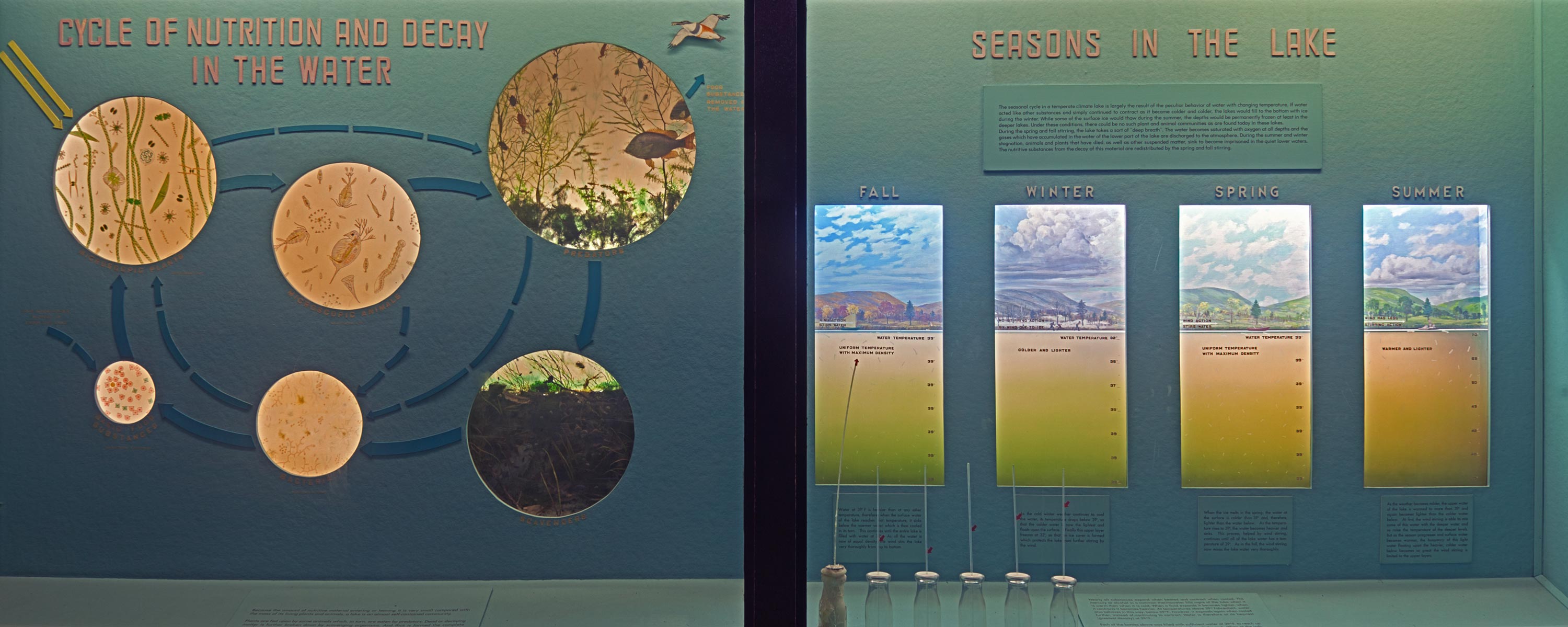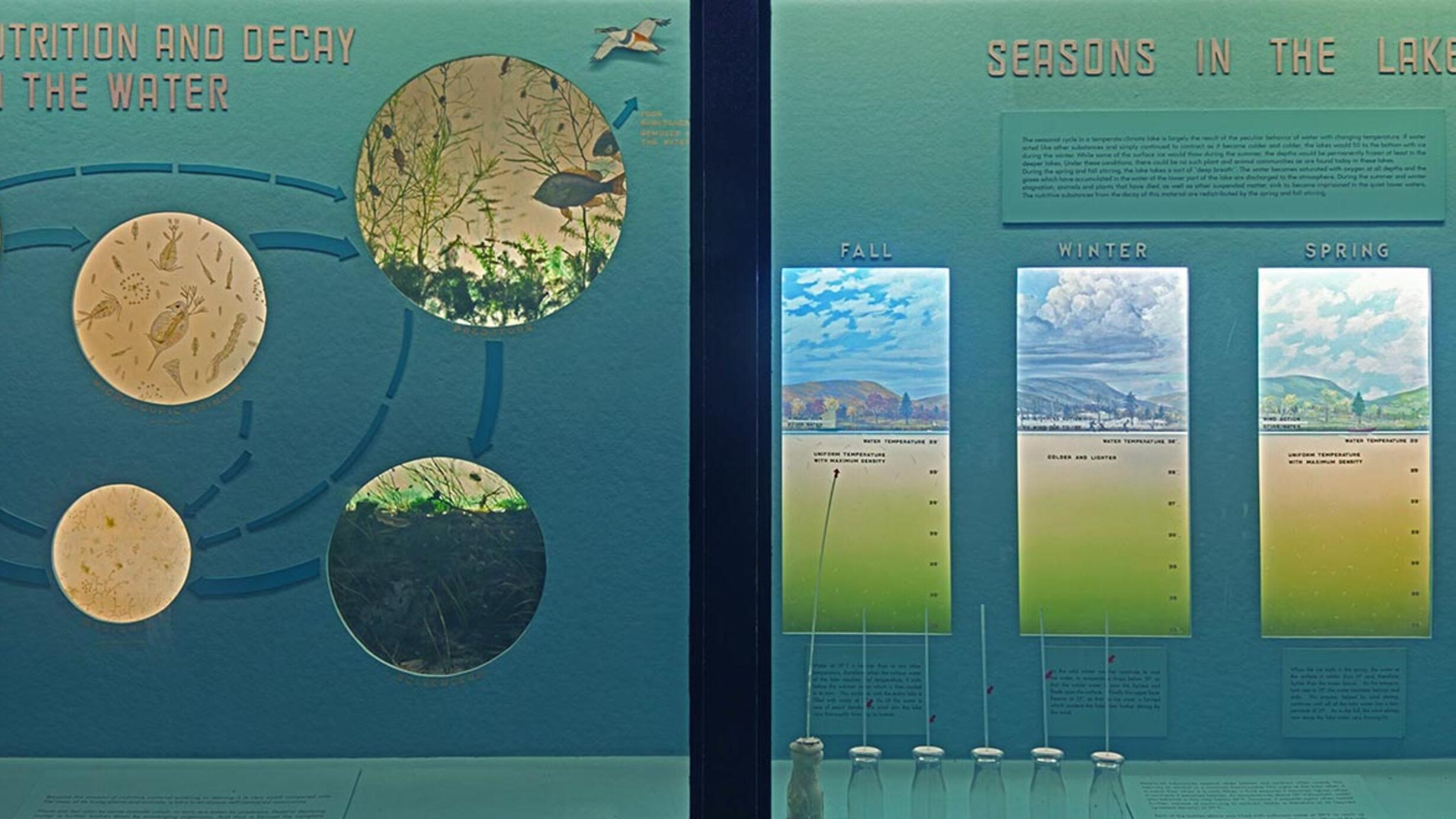Cycle of Nutrition and Decay in the Water
Because the amount of nutritive material entering or leaving it is very small compared with the mass of its living plants and animals, a lake is an almost self-contained community.
Plants are fed upon by some animals which, in turn, are eaten by predators. Dead or decaying matter is further broken down by scavenging organisms. And this is formed the complete cycle from nutrition to decay and back again to nutrition
Seasons in the Lake main text
The seasonal cycle in a temperate climate lake is largely the result of the peculiar behavior of water with changing temperature. If water acted like other substances and simply continued to contract as it became colder and colder, the lakes would fill to the bottom with ice during the winter. While some of the surface ice would thaw during the summer, the depths would be permanently frozen at least in the deeper lakes. Under these conditions, there could be no such plant and animal communities as are found today in the lakes of our temperate zone.
During the spring and fall stirring, the lake takes a sort of “deep breath". The water becomes saturated with oxygen at all depths and the noxious gases which have accumulated in the water of the lower part of the lake are discharged to the atmosphere. During the summer and winter stagnation, animals and plants that have died, as well as other suspended matter, sink to become imprisoned in the quiet lower waters. The nutritive substances from the decay of this material are redistributed by the spring and fall stirring.
Fall
Water at 39°F is heavier than at any other temperature, therefore, when the surface water of the lake reaches that temperature, it sinks below the warmer water which is then cooled in its turn. This continues until the entire lake is filled with water at 39°. As all the water is now of equal density, the wind stirs the lake very thoroughly from top to bottom.
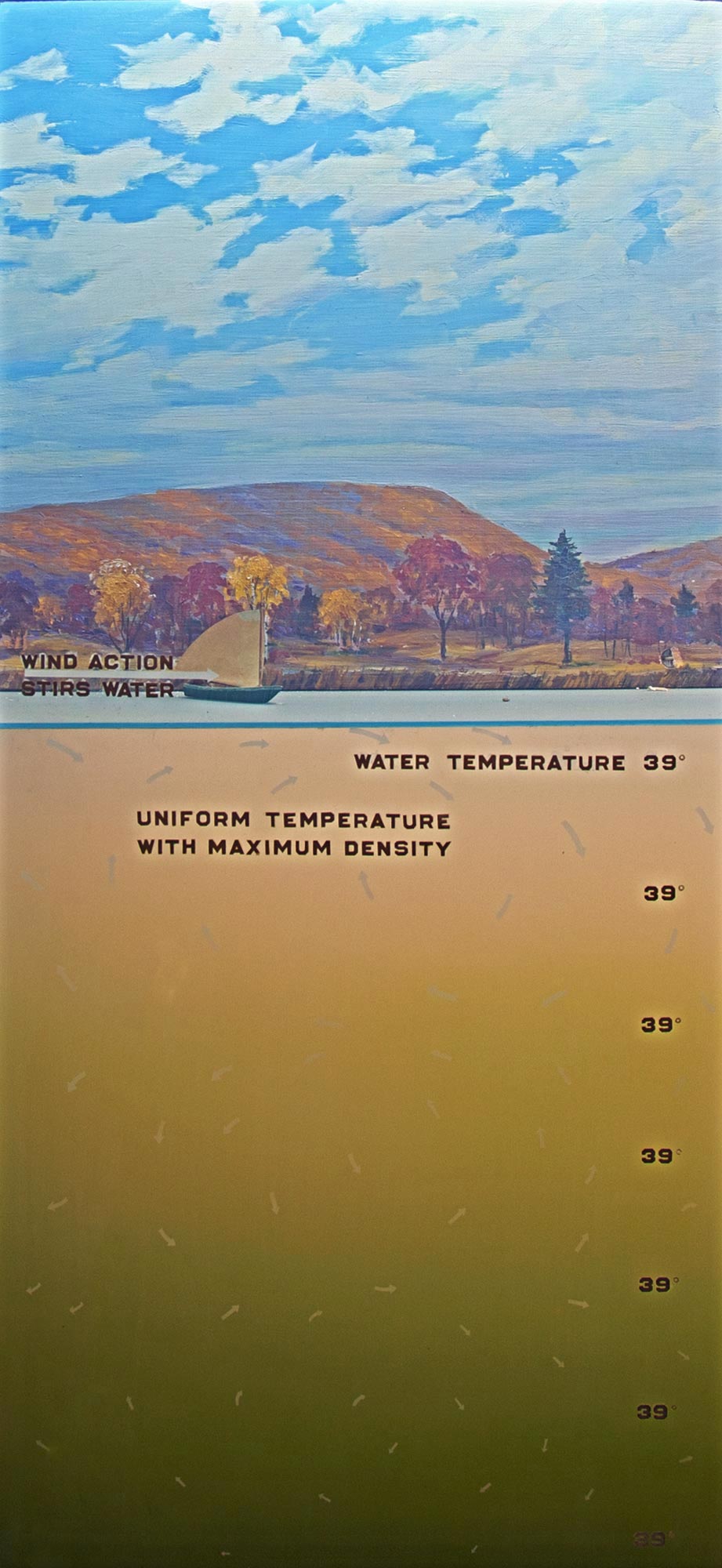
Winter
As the cold winter weather continues to cool the water, its temperature drops below 39°, so that the colder water is now the lightest and floats upon the surface. Finally this upper layer freezes at 32°, so that an ice cover is formed which protects the lake from further stirring by the wind.
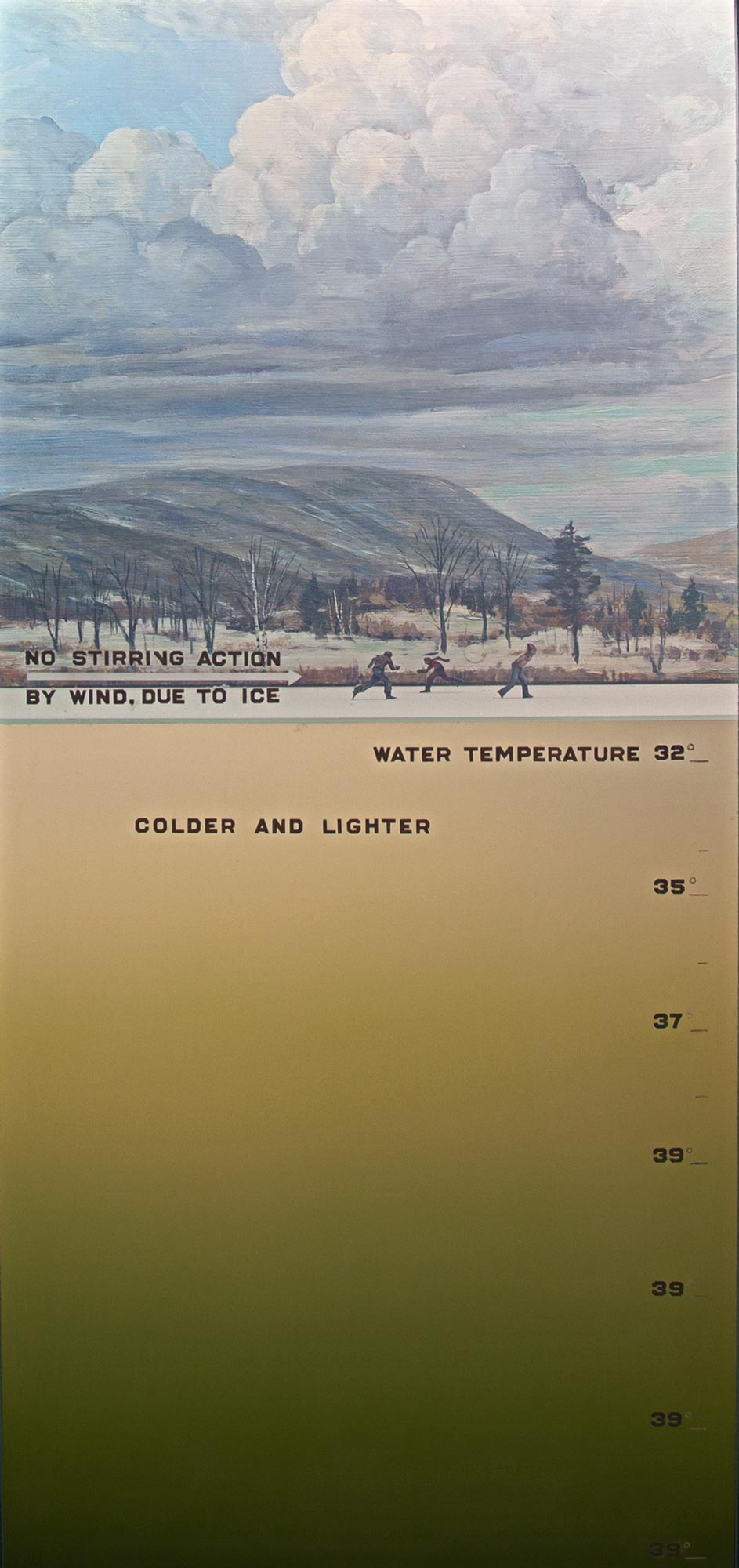
Spring
When the ice melts in the spring, the water at the surface is colder than 39° and, therefore, lighter than the water below. As the temperature rises to 39°, the water becomes heavier and sinks. This process, helped by wind stirring, continues until all of the lake water has a temperature of 39°. As in the fall, the wind stirring now mixes the lake water very thoroughly.
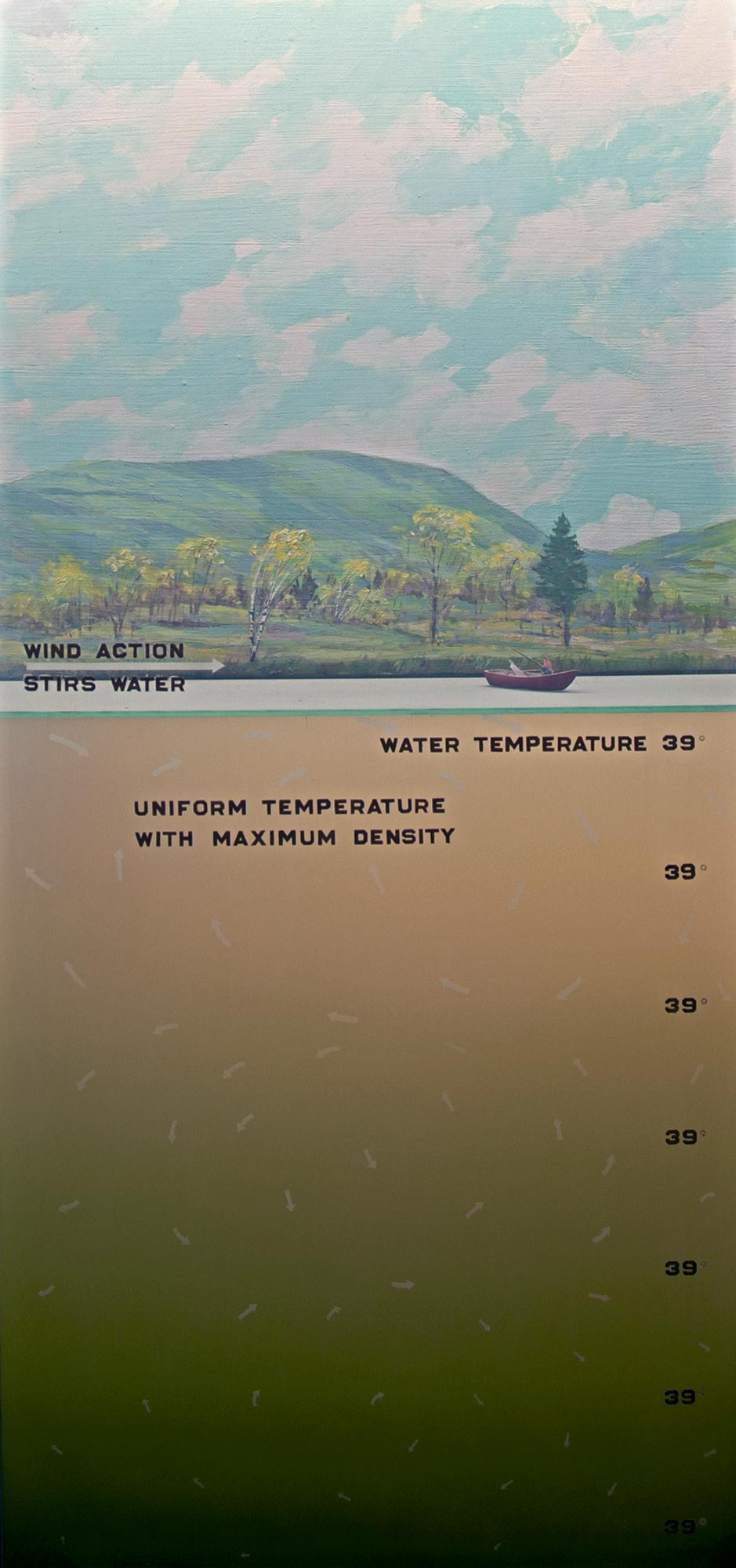
Summer
As the weather becomes milder, the upper water of the lake is warmed to more than 39° and again becomes lighter than the colder water below. At first, the wind stirring is able to mix some of this water with the deeper water and so raise the temperature of the deeper levels. But as the season progresses and surface water becomes warmer, the buoyancy of this light water floating upon the heavier, colder water below becomes so great that the wind stirring is limited to the upper layers.
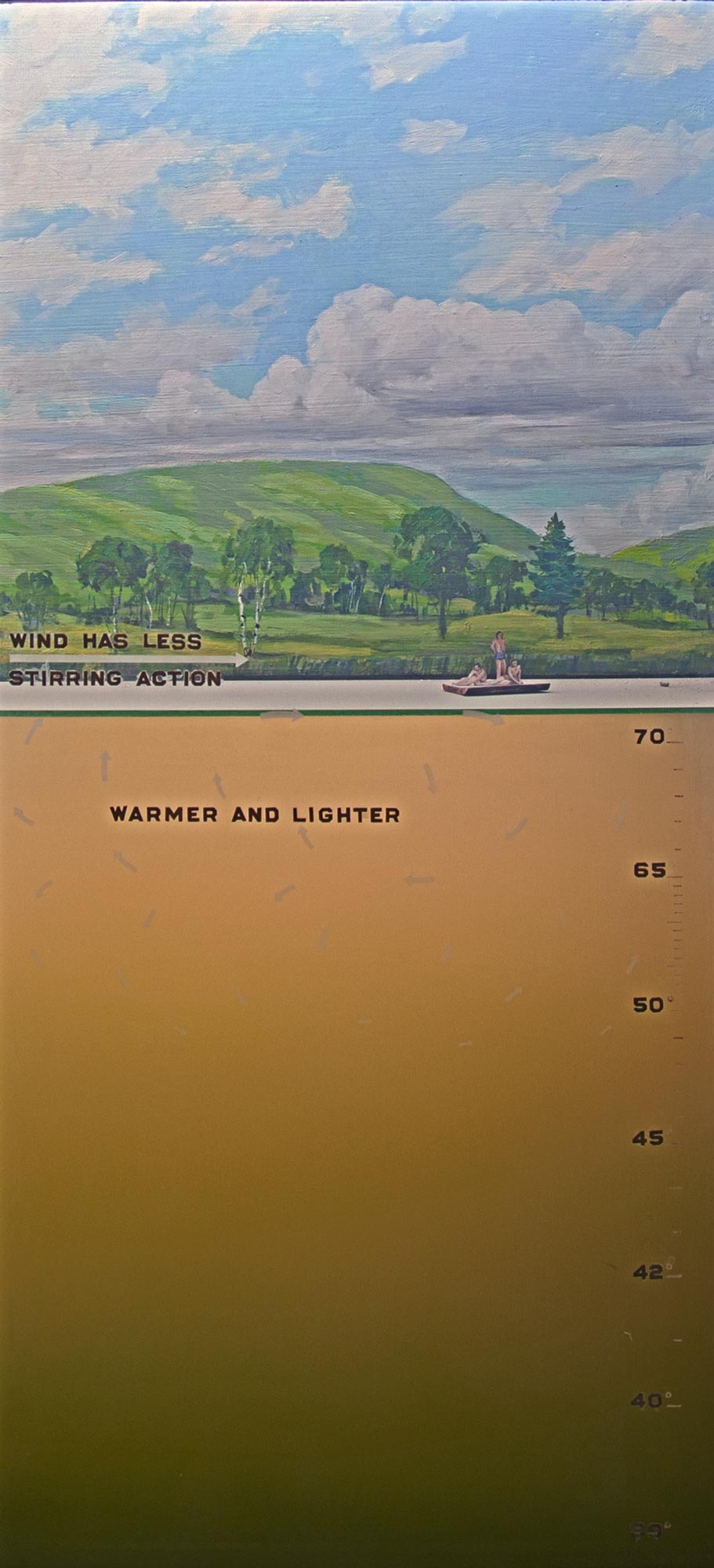
Life in the Water
Part of Hall of New York State Environment.
